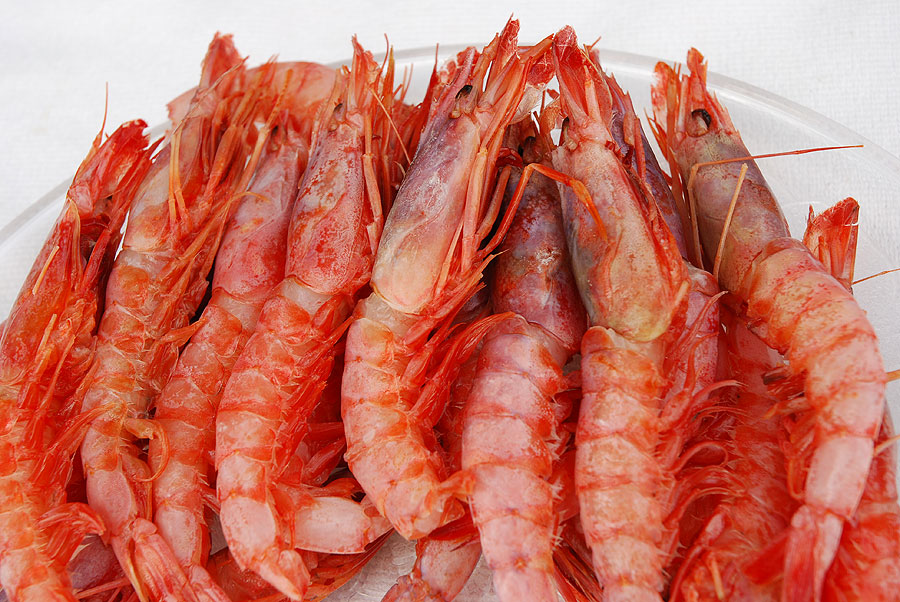
30 Aug Five characteristics that explain why Ibiza red shrimp is such a special product
The island’s gastronomy offers an amalgam of extraordinary products, among which there is one that stands out very much: the red prawn (Aristeus antennatus), which is also very scarce this season. Today we explain the reasons for its extraordinary quality through five features that make it unique.
1 ) Flavour: Its greatest virtue lies in the potency of its flavour, which is much more concentrated in the part of the head. This characteristic is directly related to its habitat, completely different from others that host this same variety in other areas of the Mediterranean. Its juices are so intense that it is necessary to cook it gently and slowly, on a special griddle that emits little heat, on a layer of thick salt. It’s how you don’t lose a drop of substance.
2) Appearance: The red shrimp stands out for the intense red color of its shell and for the size of its head, which is larger than other varieties. It usually reaches up to 22 centimeters in length.
3) Food: The Ibiza red shrimp lives on sandy bottoms, about 600 meters deep, safe from predators. It feeds on algae that do not perform the photosynthetic process, which contributes significantly to its characteristic flavor and its higher concentration of fat, which provides a juicy texture unique in the world. Although the variety is identical to that captured in other areas of the Spanish coast, its living conditions are radically different, since it inhabits rocky bottoms of different depths and feeds on mollusks and other smaller crustaceans.
4 ) Name: There is some controversy when it comes to establishing a difference between the red shrimp of Ibiza and the red shrimp of Denia, in the Spanish Levante. It’s just a matter of nomenclature, since the product is exactly the same. Regardless of the fish market where it disembarks, the crustacean is captured in the so-called “Ibiza Channel”, between the coast of Denia and the west of the island.
5) Timelessness: It is fished throughout the year, but there are irregular periods in which catches are reduced to the minimum, which causes its price to rise drastically in markets and auctions.









No Comments